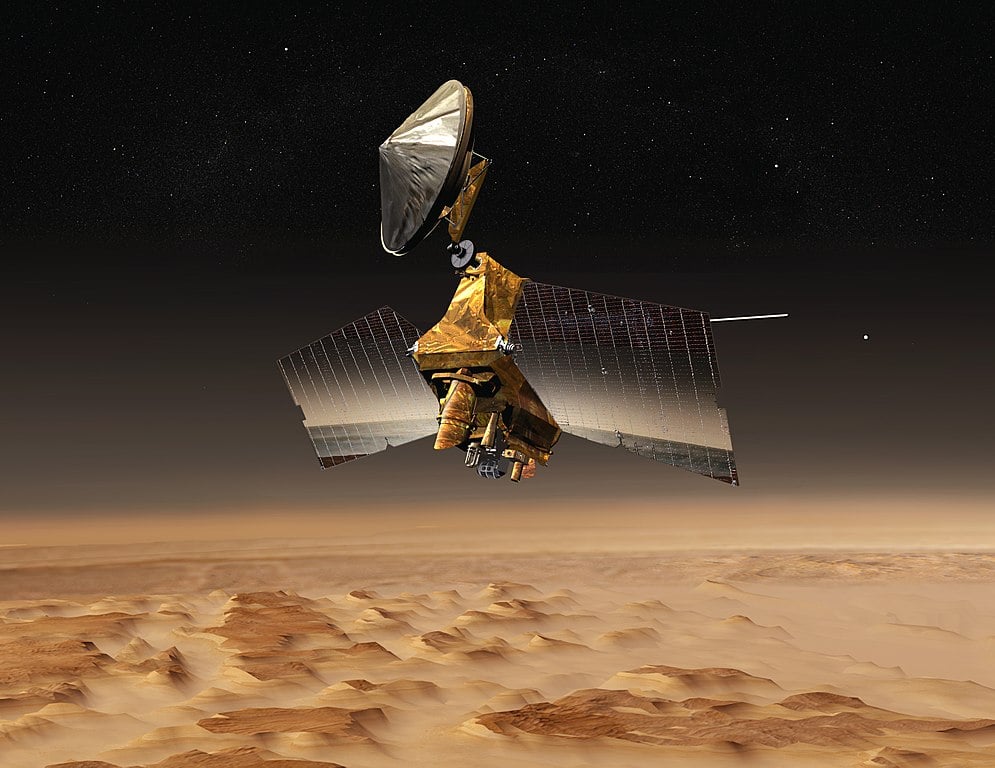SpaceX’s Falcon Heavy carrying Elon Musk’s Tesla Roadster exceeded its original trajectory and the car is set to travel towards the asteroid belt. That means that it won’t share the orbit with NASA’s Mars Reconnaissance Orbiter in standby. The spacecraft entered its standby mode and NASA’s engineers are still exploring what happened.
NASA’s MRO has been orbiting Mars for about 12 years and is facing some troubles, although it’s not something that is causing too much concern. The spacecraft entered the standby mode on its own, which also means it suspended its science and most of its communication operations on Thursday. Prior to that event, the spacecraft’s internal battery showed oddly low voltage.
The main power system of the MRO charges from solar energy. However, when the MRO enters Mars’ shadow during its orbit, the spacecraft relies on its nickel-hydrogen batteries which provide nearly identical voltage as when the spacecraft is receiving solar energy.
The reason behind NASA’s Mars Reconnaissance Orbiter going into standby mode and the low battery voltage is still being investigated by the space agency. Scientists managed to restore the battery to return to its usual levels, while they are still monitoring the spacecraft until the troubleshooting of the low voltage is finished.
“We’re in the diagnostic stage, to better understand the behavior of the batteries and ways to give ourselves more options for managing them in the future. We will restore MRO’s service as a relay for other missions as soon as we can do so with confidence in spacecraft safety — likely in about one week. After that, we will resume science observations,” MRO project manager Dan Johnston of NASA’s Jet Propulsion Laboratory (JPL), Pasadena, California, said in a statement on Saturday.
NASA’s MRO orbits the Red Planet conducting its science missions, but it is also a communications relay point which connects Earth with NASA’s rovers on Mars, Opportunity and Curiosity. The Mars Reconnaissance Orbiter in standby means that the scientists won’t be able to communicate with its rovers. Nevertheless, the spacecraft orbiting the Red Planet still communicates with NASA.
Rover Opportunity made a landmark on Saturday, when it witnessed its 5,000th Martian dawn since it landed on the Martian surface on Jan. 25, 2004. The Martian day is referred to as a sol, and it lasts nearly 40 minutes more compared to our 24-hour long day on Earth.
“Five thousand sols after the start of our 90-sol mission, this amazing rover is still showing us surprises on Mars. We’ve reached lots of milestones, and this is one more, but more important than the numbers are the exploration and the scientific discoveries,” Opportunity project manager John Callas, of JPL, said in a statement on Friday.
Opportunity’s most recent scientific observation included possible “rock stripes” on the Red Planet. On our planet, those are caused by “repeated cycles of freezing and thawing of wet soil. But it might also be due to wind, downhill transport, other processes or a combination.”
According to a statement by NASA on Thursday, scientists still haven’t determined how those stripes came to exist, and are still suggesting different theories.





